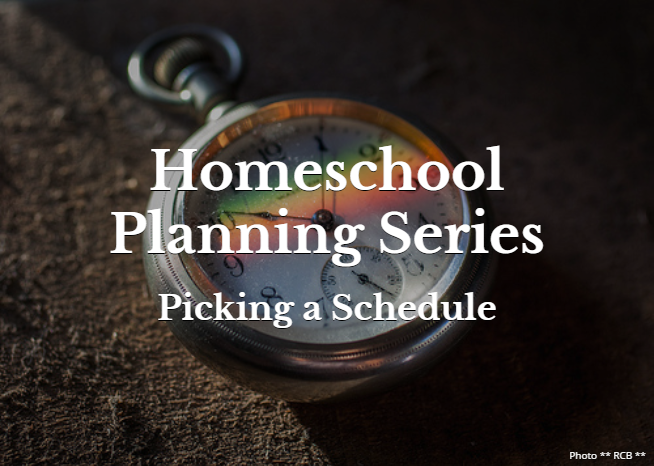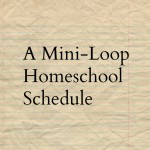 The word schedule can often send some people running, but I’ve found that a schedule is quite necessary in our homeschool. Because I work part-time and am homeschooling three kids with varying needs, a schedule keeps me sane. My kids prefer to have an organized approach to their school day as well.
The word schedule can often send some people running, but I’ve found that a schedule is quite necessary in our homeschool. Because I work part-time and am homeschooling three kids with varying needs, a schedule keeps me sane. My kids prefer to have an organized approach to their school day as well.
Summers Off or Year Round
A few years back we made the switch from a summer’s off schedule to a year round schedule. While I like having a long summer break to prepare for the upcoming school year, my kids prefer a year-round setup. I basically spread out the school year over 12 months so my kids have the same number of school days that they had when they had summers off. They typically have a week of school off for every 4-5 weeks of school.
Basically, look at the requirements for homeschooling where you live, consider your family’s lifestyle, and pick something that works for you. Adapt as necessary.
Intermission or Special Days
This past year, we have added a new element into how our homeschool year is organized. My son told me it was one of the best things about this past school year so I’ll say it was a good move for us. Every 11 or 12 days of school, we have what is called a special day. On this day we spend time doing things like playing board games, going on hikes, cooking competitions, getting together with friends, watching movies, or other informal ways to learn.
Organizing the School Day
We often do a schedule dance around here. To keep things fresh, I switch around how our day is organized every couple of months. We’ve done daily lists, weekly lists, time schedules, block schedules, loop schedules, as well as variations of all of the above.
Daily routine – This is a simple set-up that works well for younger children. Each school day follows a similiar routine, but there are no time restraints or looking at the clock.
Daily list – A daily list is where you write down assignments that the child needs to complete for the day. Typically the child is done when the list is done.
Weekly list – The child works on a weekly list each day. When the weekly list is finished, the child is done with school for the week.
Time scheduling – Subjects are scheduled at a certain time of the day. For example, math may be at 10:00 and science at 11:00. Some may start this way until a routine is built-up and then they use a routine.
Block scheduling – The child studies a subject for a longer period of time, but does so less frequently. The amount of time is usually determined ahead of time.
Loop scheduling – The child studies subjects on a list. When the list is finished, the child loops back to the top to start the list again. The child typically works until a certain time. The next day the child picks up where he left off.
Which do you use? Please share in the comments.
We are currently using a mixture of time scheduling, block scheduling, and loop scheduling.
Be sure to check out other topics in our homeschool planning series:






